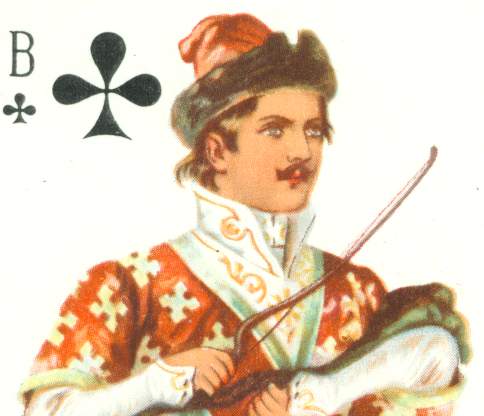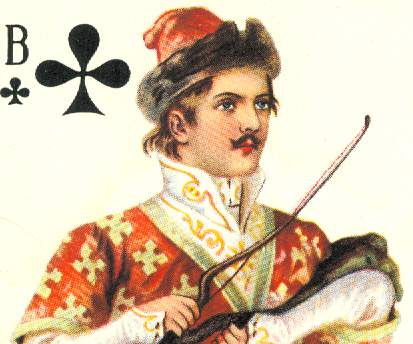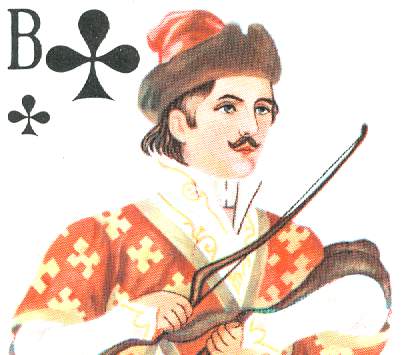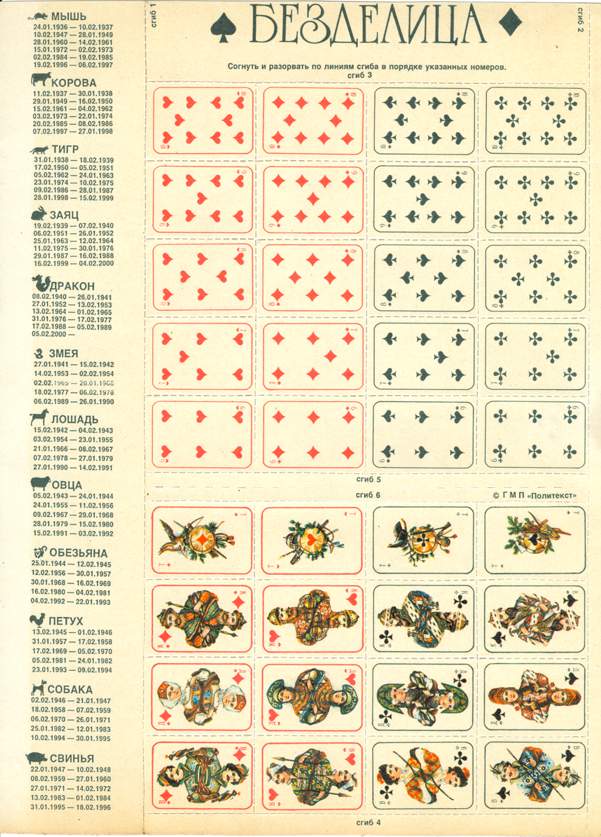| c1970 | c1973 - c1980 | c1980 - 2004 |
 |
 |
 |
|
China 2000's (?) |
The top row shows the Russian offset prints and you can see the decline of the quality of the image. The second image looks better than the first, but the rougher grid of the offset is visible, when enlarged or seen through a magnifying glass. No need to comment on the last Jack above. The (lack of) quality speaks for itself. But the quality of our Chinese Jack is even worse. It looks like a cheap photocopy and the Jack seems to have lost a piece of his hair, where a shine was intended. Speaking of hair, did you notice that the hair of the Russian Jacks has grown darker and darker over the years. We have always had a preference for chromolithographic printed cards. It's a delight to look at them through a magnifying glass and, up to a certain point, you can enlarge them as much as you want and the images get better and better. Like in any beauty contest, there can only be one winner. For us, he's on the right here. We hope you can agree to that. |
1911-1917 |
 |
 |
|
|
After the
Colour Printing Plant had stopped in 2004, the Russian Style pattern was
produced in Russia by the GMGroup and RusJoker, both from St.
Petersburg, in editions from 2005 and 2006. Of course the pattern has
been produced outside of Russia too. Already mentioned is the Piatnik
edition, but Fournier from Spain has also made a nice reproduction, in a
regular size and a patience size, with English indices. These editions
were not specifically targeted at the Russian market. However, Chinese
manufacturers have produced this pattern for the Russian market and seem
to have conquered that market. And looking at the quality of the example
here above, we can understand the complaints by Russian collectors. |
||
